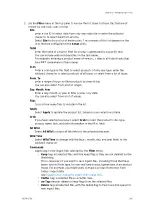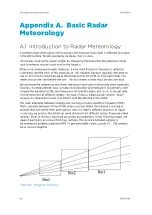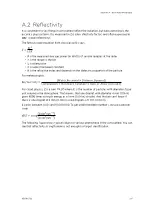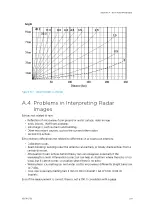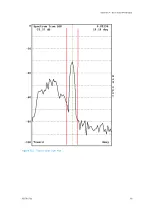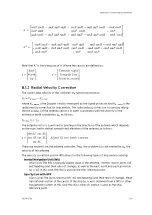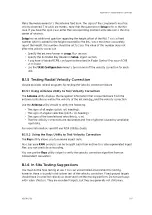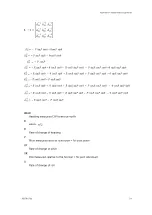
Figure 102 Beam Height vs. Range
A.4 Problems in Interpreting Radar
Images
Echoes not related to rain:
• Reflection of microwaves from ground or water surface, radar mirage
• Birds, insects, chaff from airplanes
• Solid targets, such as masts and buildings
• Other microwave sources, such as the sun and other radars
• Second trip echoes
Echo intensity differences not related to differences in precipitation intensity:
• Calibration issues.
• Beam blocking: buildings near the antenna can partially or totally shade echoes from a
certain direction.
• Attenuation in rain: echoes behind heavy rain can disappear, especially if the
wavelength is small. Attenuation correction can help in situations where the echo is too
weak, but it cannot correct a situation where there is no echo.
• Water phase: ice, melting ice, and water scatter microwaves differently. Bright band can
be 7 dBZ.
• Drop size: especially melting hail. 2 mm (0.08 in) droplet = 64 of 1 mm (0.04 in)
droplets.
Even if the measurement is correct, there is not a 100 % correlation with a gage:
Appendix A – Basic Radar Meteorology
RESTRICTED
299
Summary of Contents for IRIS
Page 1: ...M211319EN H RESTRICTED User Guide IRIS Radar IRIS Product and Display...
Page 12: ...IRIS Product and Display User Guide M211319EN H 10 RESTRICTED...
Page 71: ...Chapter 3 Configuring IRIS Products RESTRICTED 69...
Page 303: ...Figure 103 Typical Spectrum Plot Appendix A Basic Radar Meteorology RESTRICTED 301...
Page 386: ......
Page 392: ......
Page 393: ......
Page 394: ...www vaisala com...

